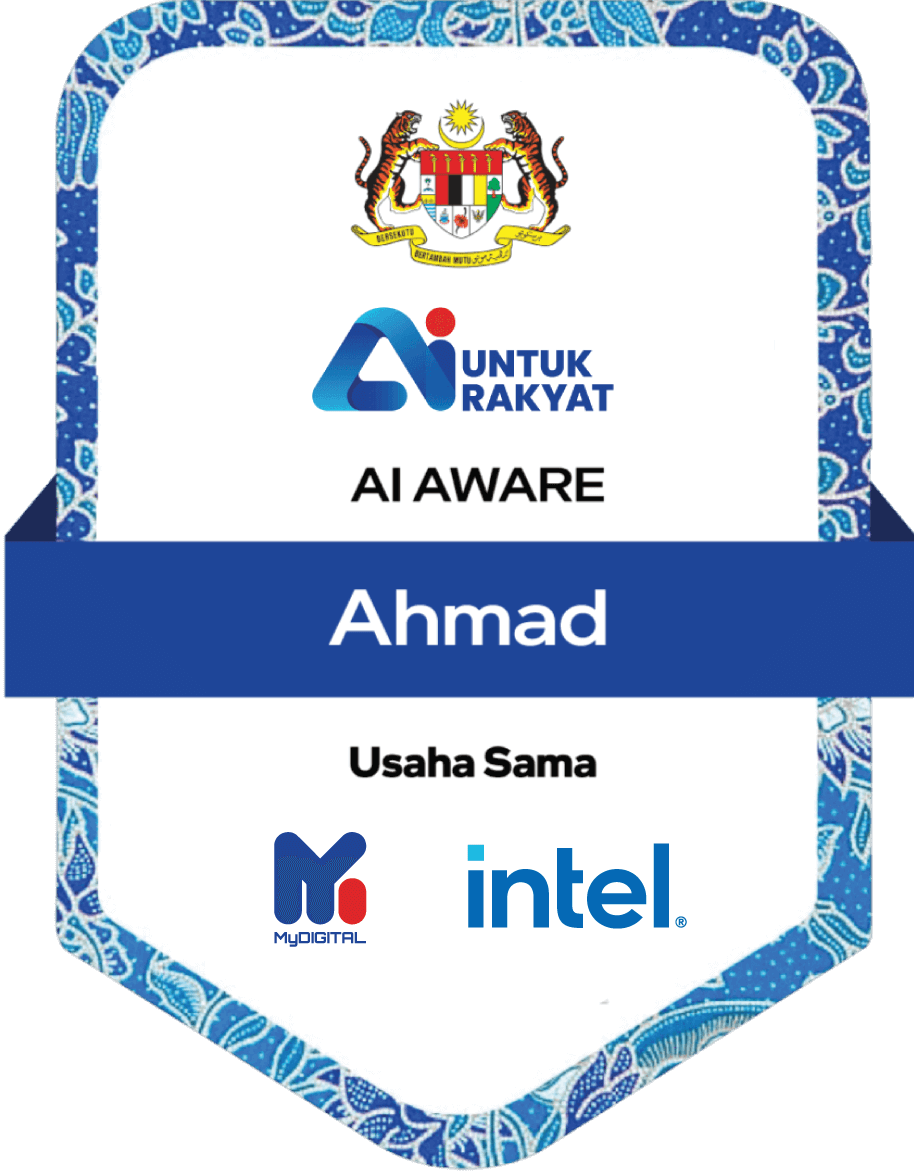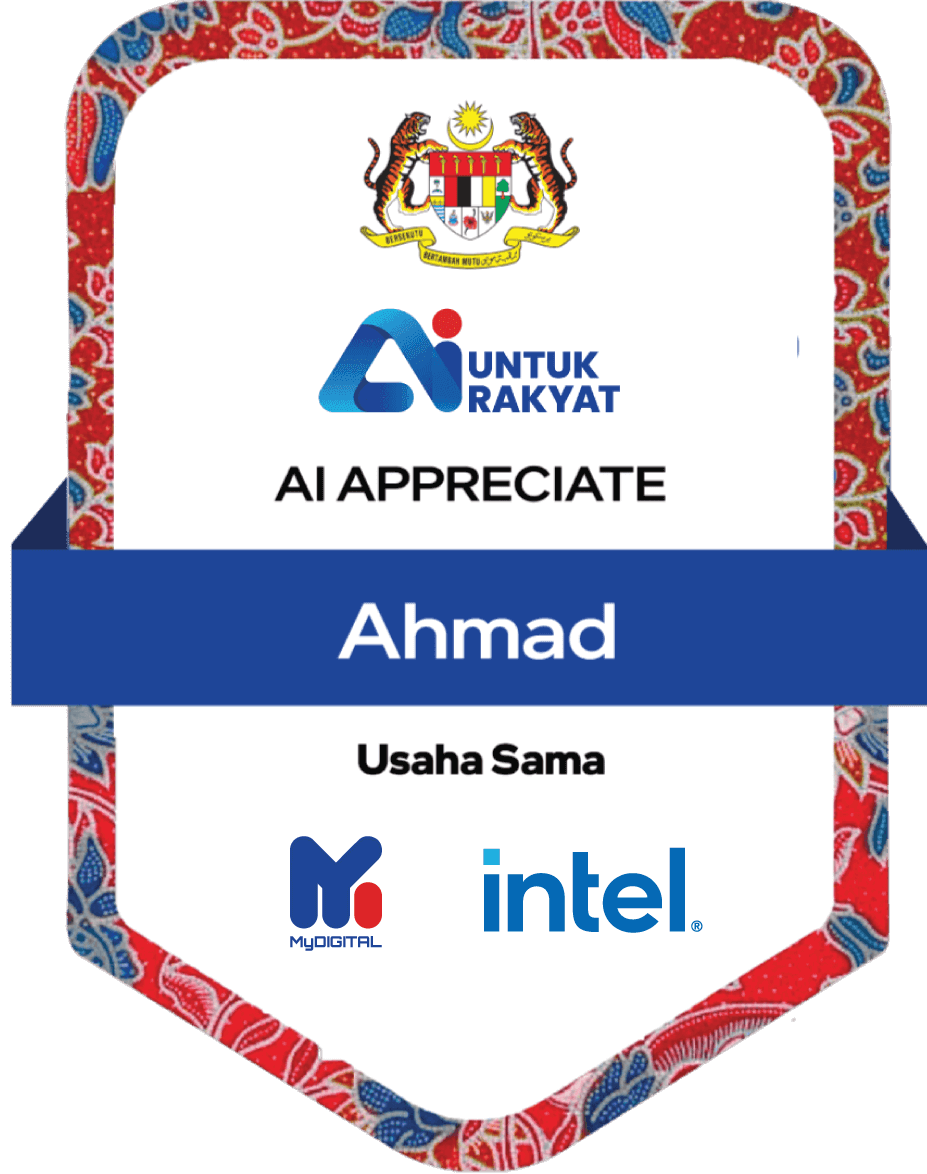AI simulates human intelligence processes by machines, especially computer systems. These processes include learning (the acquisition of information – “Big Data” – and rules for using the information), reasoning (using rules to reach approximate or definite conclusions), and self-correction. Examples of particular AI applications include expert systems, speech recognition, and machine vision.
Source: Azmilaw Newsletter, https://www.azmilaw.com/insights/overview-of-artificial-intelligence-in-malaysia-2/
Anduril Industries recently gained a contract with the Pentagon’s controversial AI program, Project Maven. Anduril Industries was founded in 2017 and is the brainchild of Palmer Luckey, founder of VR Oculus and the designer of Oculus Rift, a high-quality virtual reality head-mounted display. Project Maven is a controversial AI program that uses machine learning to sort through millions of hours of drone footage to help systems identify people from their surroundings. The project would help reduce the burden on human labor and improve the intelligence captured in cameras. The goal of Project Maven is to deliver higher quality information back to military officers, with the idea that with better decisions, there’s less chance of mistakes that result in civilian casualties.
Staffordshire University has incorporated Beacon, an AI tool that acts as a digital assistant. The chatbot, which can be downloaded in a mobile app, enhances the student experience by answering timetable questions and suggesting societies to join. Beacon can also apply for an exemption from council tax, order new student cards, and connect users with lecturers. Students can chat with Beacon via text or voice conversation, and as use increases, it becomes brighter. Eventually, it will be able to remind students about classes and deadlines.
In the small suburbs of Phoenix, Arizona, AI enhances the ridesharing experience by creating autonomous cars. The company behind this innovative use of AI is ‘Waymo,’ which started as a Google self-driving car project in 2009.
Waymo now intends to operate as a ridesharing service, much like Grab and Uber, with an AI edge wherein a driver is not needed, and the car is wholly used through a centralized AI system. Waymo only operates in Phoenix through their ‘Early Riders’ focus group to test the rideshare exclusively for 400 people. Waymo intends to introduce Waymo One, the next phase of its operations. Currently, Waymo is not inclined to comment on when the rideshare will open to the public, as configurations are still needed to ensure public safety.
Waymo now intends to operate as a ridesharing service, much like Grab and Uber, with an AI edge wherein a driver is not needed, and the car is wholly used through a centralized AI system. Waymo only operates in Phoenix through their ‘Early Riders’ focus group to test the rideshare exclusively for 400 people. Waymo intends to introduce Waymo One, the next phase of its operations. Currently, Waymo is not inclined to comment on when the rideshare will open to the public, as configurations are still needed to ensure public safety.
Sabah’s Digital and Artificial Intelligence Legal Aid Centre
Malaysia’s first Digital and Artificial Intelligence Legal Aid Centre is being set up in Sabah to provide legal advice to the public. The center is set to open its doors at the Grand Merdeka Shopping Mall in Telipok, about 21km from the state capital, in November. The center provides legal advice and computer services to give users access to statutes, case law, textbooks, agreements, forms, and precedents. However, Lawyer Marcel Jude, who is among those helping to set up the center, states that while legal advice is provided pro bono, users will have to pay to access the computer services.
Malaysia’s first Digital and Artificial Intelligence Legal Aid Centre is being set up in Sabah to provide legal advice to the public. The center is set to open its doors at the Grand Merdeka Shopping Mall in Telipok, about 21km from the state capital, in November. The center provides legal advice and computer services to give users access to statutes, case law, textbooks, agreements, forms, and precedents. However, Lawyer Marcel Jude, who is among those helping to set up the center, states that while legal advice is provided pro bono, users will have to pay to access the computer services.
1. Malaysia
The traditional stethoscope is updated with Stethee Pro, a strategic collaboration between the Malaysian Investment Development Authority, Collaborative Research in Engineering, Science, and Technology (Crest), and M3DICINE, facilitated by the Telemedicine Development Group (TDG). Stethee Pro is an AI-enabled stethoscope system that allows users to listen to heart and lung sounds with sophisticated amplification and filtering technology. This improves how the heart and lungs are examined with detailed and accurate analysis by enabling the recordings to be transmitted to a smart device such as a smartphone or a tablet via Bluetooth technology. These recordings are then analyzed to build a personal biometric signature for each patient and detect the presence of heart or lung diseases. Artificial Intelligence and Data Analytics (Aida), the technology platform behind the Stethee AI engine, also automatically tags geolocation and aggregates environmental data for analysis by healthcare professionals.
Aida then analyses the data and provides doctors, vets, and healthcare professionals with quantitative, clinically actionable data. The Stethee Pro has received clearance from the United States Food and Drug Administration for use by medical and healthcare professionals.
Aida then analyses the data and provides doctors, vets, and healthcare professionals with quantitative, clinically actionable data. The Stethee Pro has received clearance from the United States Food and Drug Administration for use by medical and healthcare professionals.
2. United Kingdom
Microsoft InnerEye
Addenbrooke Hospital in Cambridge is using Microsoft’s InnerEye system to process scans for patients with prostate cancer automatically. The system takes a scanned image (all scans are anonymized, so patient data is kept private), outlines the prostate on the image, marks up tumors, and reports back. This is speeding up prostate cancer treatment, and the hospital is looking at using the same technology for brain tumor patients.
HeartFlow
HeartFlow’s AI technology is also being used in the NHS. This system analyses CT scans of patients suspected of having coronary heart disease and then creates a personalized 3D model of the heart that shows how blood flows around it. This helps doctors spot where blockages disrupt blood flow. HeartFlow analysis is far less costly and intensive than the standard angiogram (assessing restricted blood flow by pumping dye into the heart). HeartFlow cuts costs by a quarter.
Google DeepMind
Google’s DeepMind firm has been working with Moorfields Eye Hospital NHS Foundation Trust since 2016 to help medical professionals improve how eye conditions are diagnosed and treated. DeepMind has developed AI technology that can automatically identify sight-threatening eye conditions within seconds and rank patients in order of urgency for treatment. The company says its system has matched the accuracy of eye doctors with 20 years of experience.
Addenbrooke Hospital in Cambridge is using Microsoft’s InnerEye system to process scans for patients with prostate cancer automatically. The system takes a scanned image (all scans are anonymized, so patient data is kept private), outlines the prostate on the image, marks up tumors, and reports back. This is speeding up prostate cancer treatment, and the hospital is looking at using the same technology for brain tumor patients.
HeartFlow
HeartFlow’s AI technology is also being used in the NHS. This system analyses CT scans of patients suspected of having coronary heart disease and then creates a personalized 3D model of the heart that shows how blood flows around it. This helps doctors spot where blockages disrupt blood flow. HeartFlow analysis is far less costly and intensive than the standard angiogram (assessing restricted blood flow by pumping dye into the heart). HeartFlow cuts costs by a quarter.
Google DeepMind
Google’s DeepMind firm has been working with Moorfields Eye Hospital NHS Foundation Trust since 2016 to help medical professionals improve how eye conditions are diagnosed and treated. DeepMind has developed AI technology that can automatically identify sight-threatening eye conditions within seconds and rank patients in order of urgency for treatment. The company says its system has matched the accuracy of eye doctors with 20 years of experience.
3. United States
Mayo Clinic
In January 2017, Mayo Clinic’s Center for Individualized Medicine teamed up with Tempus. The partnership involves Tempus conducting “molecular sequencing and analysis for 1,000 Mayo Clinic patients participating in studies relating to immunotherapy” for several cancer types, including “lung cancer, melanoma, bladder cancer, breast cancer, and lymphoma.” The clinic can develop personalized cancer care for each patient using a machine-learning platform through this analysis.
Cleveland Clinic
In September 2016, Microsoft announced a collaboration with Cleveland Clinic to help the medical center “identify potential at-risk patients under ICU care” using Cortana. Microsoft’s AI digital assistant, Cortana was integrated into Cleveland Clinic’s eHospital system, a type command centre that monitors “100 beds in six ICUs” from 7 pm to 7 am. The Microsoft Cleveland Clinic partnership's primary focus is identifying high-risk patients for cardiac arrest.
In January 2017, Mayo Clinic’s Center for Individualized Medicine teamed up with Tempus. The partnership involves Tempus conducting “molecular sequencing and analysis for 1,000 Mayo Clinic patients participating in studies relating to immunotherapy” for several cancer types, including “lung cancer, melanoma, bladder cancer, breast cancer, and lymphoma.” The clinic can develop personalized cancer care for each patient using a machine-learning platform through this analysis.
Cleveland Clinic
In September 2016, Microsoft announced a collaboration with Cleveland Clinic to help the medical center “identify potential at-risk patients under ICU care” using Cortana. Microsoft’s AI digital assistant, Cortana was integrated into Cleveland Clinic’s eHospital system, a type command centre that monitors “100 beds in six ICUs” from 7 pm to 7 am. The Microsoft Cleveland Clinic partnership's primary focus is identifying high-risk patients for cardiac arrest.
Simultaneous Artificial Response and Action (SARA)
Saratix and Custlr have partnered to launch an artificial intelligence (AI) fashion technology, SARA, with a user-friendly add-on that provides fashion business services, including body-profiling using only an A4 paper, fashion analytics, and retail reports.
Custlr, an online tailoring brand using a crowd-sourced engine to produce apparel, will use AI fashion technology to concentrate on online businesses' problems regarding inventory holdings, conversion rates, and targeted consumer purchasing. Saratix’s AI and A4 technology can precisely measure a person’s body size in seconds with a mobile device, which differs from the typical average-based profiles using height and weight. SARA is powered by Deep Learning Neural Network and machine learning. It was developed with the help of professors, students, developers, and engineers from several universities in Malaysia. SARA’s algorithm analyses and produces reports that help boost business growth and reduce return rates. Along with Malaysia-based system and software development solutions company BESTWEB Technologies, Saratix is working on creating a more substantial, robust, and intelligent AI.
Saratix and Custlr have partnered to launch an artificial intelligence (AI) fashion technology, SARA, with a user-friendly add-on that provides fashion business services, including body-profiling using only an A4 paper, fashion analytics, and retail reports.
Custlr, an online tailoring brand using a crowd-sourced engine to produce apparel, will use AI fashion technology to concentrate on online businesses' problems regarding inventory holdings, conversion rates, and targeted consumer purchasing. Saratix’s AI and A4 technology can precisely measure a person’s body size in seconds with a mobile device, which differs from the typical average-based profiles using height and weight. SARA is powered by Deep Learning Neural Network and machine learning. It was developed with the help of professors, students, developers, and engineers from several universities in Malaysia. SARA’s algorithm analyses and produces reports that help boost business growth and reduce return rates. Along with Malaysia-based system and software development solutions company BESTWEB Technologies, Saratix is working on creating a more substantial, robust, and intelligent AI.

Snap
Snap is the tech company responsible for the popular Snapchat mobile app, which allows users to share videos, images, and messages that remain visible for a limited time. Snapchat’s features include the My AI chatbot built on OpenAI’s ChatGPT technology. Users can exchange messages with the conversational AI and provide feedback to inform its continued improvement.
ChatGPT
A leader in the chatbot space, ChatGPT can engage with users, answer given questions, and generate new text. ChatGPT is popularly used to create written content, like articles, emails, scripts, essays, and code. Its developer, OpenAI, is also responsible for designing AI models GPT-4, DALL-E and DALL-E 2.

Bing
Microsoft Bing has long been known as a search engine for exploring the web. Still, it can also be used as a chatbot to respond to questions, produce creative text and images, plus translate and proofread writing in multiple languages. Bing’s chat feature — available on Bing.com, the Microsoft Edge web browser, and as a mobile app — runs on GPT-4 technology to generate its content.
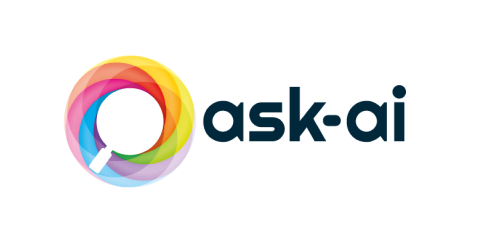
Ask AI
Powered by the ChatGPT API and GPT-4, Ask AI can answer user questions, chat with users, and write outlines and other new content based on text prompts. Ask AI provides various topics to talk about, from business to entertainment, and can do so across several different languages. It can also scan and capture text from photos taken by users to start a conversation.
Source: https://builtin.com/artificial-intelligence/ai-apps

Calm
With more than 50 million downloads on the Google Play Store, Calm is one of the most popular mobile meditation apps on the market today. It offers guided meditation, sleep and stretching services, as well as music and scenes to help users sleep, relax or focus. The app also uses Amazon Personalize, a machine learning-powered tool developed by AWS, to deliver more individualized experiences and recommendations to users based on their data.

FitnessAI
Available exclusively as an iOS app, FitnessAI uses artificial intelligence to generate personalized workouts according to a given user’s experience and goals. With nearly 6 million preset workouts, the AI optimizes sets, reps and weight for each exercise every time a user works out. Users can also track their progress over time on the app.

Woebot Health
Woebot Health combines decades of psychology research with advanced AI to assess, chat and respond to users’ symptoms of mental health conditions like anxiety and depression, according to the company. Woebot is also very intentional about reminding users that it is a chatbot, not a real person, which establishes trust among users, according to Jade Daniels, the company’s director of content.

Youper
Youper features a mental health-focused AI chatbot, which converses with users about their emotional struggles, and offers personalized advice and techniques for how to cope. The app also offers a mood tracker, personality assessments, a selection of mindfulness exercises and more. Like Woebot, Youper claims its technology is based on decades of psychological and evidence-based therapies.
Source: https://builtin.com/artificial-intelligence/ai-apps

FaceApp
FaceApp leverages AI to help users get creative with their selfie editing. The app allows users to adjust their face’s aesthetic features like makeup, hairstyle, or facial hair or even change physical features like face shape, gender characteristics, or perceived age. A related app by the same developer, FaceApp Video, can apply similar edits and effects to videos.
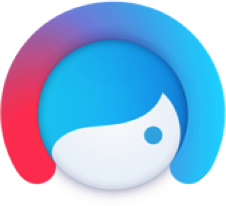
Facetune
For people wanting to make quick edits to their photos and videos, Facetune is a popular resource. It is commonly used to make skin touch-ups, whiten teeth, add makeup, and alter facial shape. The app also has an avatar generator, allowing users to level up their selfies with AI-generated costumes, hairstyles, backgrounds, and more.

Lensa
Lensa has taken social media by storm with its ability to generate artistic edits and iterations of selfies that users provide. Created by Prisma Labs, Lensa uses neural networks, computer vision, and deep learning techniques to bring mobile photography and video creation “to the next level,” according to the company. The app allows users to make anything from minor edits like background blurring to unique renderings.

StarryAI
StarryAI is an AI art generator that can transform a simple text prompt into an image. To accomplish this, the app relies on two AI models. The first uses a specific class of machine learning models called GANs, or generative adversarial networks, to render the artwork creations. The second uses stable diffusion to create artwork and images. StarryAI is one of many text-to-image generators on the market right now and allows users to make everything from AI avatars to NFTs.
Source: https://builtin.com/artificial-intelligence/ai-apps

Google Maps
Google Maps aggregates location data from smartphones, as well as user-reported data on things like construction and car accidents to monitor the ebb and flow of traffic, determine an ETA and provide users with the fastest route to their desired destination. The app also uses advanced machine learning techniques and analysis of historical traffic conditions to predict traffic conditions in the near future.

Waze
Although it was acquired by Google in 2013, the Waze app remains a separate entity from Google Maps, and a top competitor to both its parent company’s GPS and others. In addition to relying on real-time traffic data shared by its millions of active monthly users, Waze uses AI and machine learning to provide its users with the fastest available routes to their destinations.
Source: https://builtin.com/artificial-intelligence/ai-apps

Ally Financial
Ally Financial’s mobile banking app has a text and voice-enabled AI chatbot to answer questions, handle any money transfers and payments, as well as provide transaction summaries. Ally also uses AI to streamline its loan approval process, extracting data from loan documents and comparing them with multiple databases to confirm applicants’ identity, employment, income and other pertinent information.

Cleo
Cleo is a chatbot that is specifically designed to provide budgeting assistance by linking directly to a user’s bank account. Using AI and natural language generation, the app provides general financial advice as well as unique messages according to if a user wants to be “roasted” or “hyped” for their financial behavior. Cleo also helps users set specific budgets and goals, track their spending and more.

Fyle
Available on both desktop and as a mobile app, Fyle uses AI to simplify employee expense management. Specifically, it can handle expense reporting, real-time data extraction, travel requests and advances, analytics and much more. By directly integrating with any Visa and Mastercard card, Fyle provides employees with automatic notifications about transactions, and allows them to submit their receipts directly through other apps like Gmail, Outlook and Slack.

Google Recorder
Unlike many other AI transcription services, Google’s Recorder is free — so long as the user has a Pixel smartphone. All they have to do is open the app and press the large red button to record their call, which is automatically transcribed at the same time. Once the transcription is complete, users can search through it, edit it, move around sections and share it either in-full or as snippets with others.

Otter.ai
Available both online and as a mobile app, Otter.ai offers a wide range of services, including the ability to record Zoom and Google video conferences, as well as phone calls. It uses artificial intelligence to automatically transcribe those recordings, breaking them down by speaker. The transcription also includes an automatically generated outline with corresponding time stamps, which highlights the key conversation points in the recording and allows users to jump to them quickly.
Trint
Trint’s AI transcription services have been used by major organizations including Airbnb, the Washington Post and Nike. Its AI-enabled mobile app allows users to easily record, transcribe and publish content instantly, as well as leave notes and make edits to the transcription itself. According to Trint, it can also automatically transcribe in over 30 different languages, and translate completed transcriptions into more than 50 languages.
Source: https://builtin.com/artificial-intelligence/ai-apps

Alexa
Since its launch in 2014, Amazon’s Alexa has become a household name. The AI voice assistant allows users to make lists, set alarms, order products online and much more. And its sophisticated natural language processing capabilities allow Alexa to not only understand spoken language, but also generate it through fluent conversations with users. Amazon announced in 2023 that, going forward, its voice assistant will be powered by a new large language model, one designed to better understand more conversational phrases. Alexa’s app can also be paired with accompanying smart devices to control things like smart thermostats, wearables, televisions and even cars straight from the user’s phone.

Google Assistant
As a leader in the AI space, Google Assistant is considered to be one of the most advanced virtual assistants of its kind on the market. Using natural language processing, it supports both voice and text commands, and can handle everything from internet searches to voice-activated control of other devices. The app is compatible with an entire suite of smart devices, including refrigerators, lights and cars — providing a truly connected Internet-of-Things experience for users.

Siri
Launched in 2011, Siri is widely considered to be the OG of virtual assistants. By this point, all Apple devices are equipped with it, including iPhones, iPads, watches and even televisions. The app uses voice queries and a natural language user interface to do everything from send text messages to identify a song that’s playing. It can also adapt to a user’s language, searches and preferences over time.
Source: https://builtin.com/artificial-intelligence/ai-apps

Consensus
Consensus looks like most search engines, but what sets it apart is that you ask Yes/No questions, to which it provides answers with the consensus of the academic community.
Users can also ask Consensus about the relationship between concepts and something’s cause and effect. For example: Does immigration improve the economy?
Consensus would answer that question by stating that most studies have found that immigration generally improves the economy, providing a list of the academic papers it used to arrive at the consensus and ultimately sharing the summaries of the top articles it analyzed.
The AI-powered search engine can only respond to six topics: economics, sleep, social policy, medicine, mental health, and health supplements.
Users can also ask Consensus about the relationship between concepts and something’s cause and effect. For example: Does immigration improve the economy?
Consensus would answer that question by stating that most studies have found that immigration generally improves the economy, providing a list of the academic papers it used to arrive at the consensus and ultimately sharing the summaries of the top articles it analyzed.
The AI-powered search engine can only respond to six topics: economics, sleep, social policy, medicine, mental health, and health supplements.
.svg)
Elicit.org
Elicit, "the AI research assistant," according to its founders, also uses language models to answer questions. Still, its knowledge is based solely on research, enabling "intelligent conversations" and brainstorming with a knowledgeable and verified source.
The software can also find relevant papers without perfect keyword matches, summarise them, and extract critical information.
The software can also find relevant papers without perfect keyword matches, summarise them, and extract critical information.

Scite.ai
Although language models like ChatGPT are not designed to deceive intentionally, it has been proven they can generate text that is not based on factual information and include fake citations to papers that don't exist.
But there is an AI-powered app that gives you accurate citations to published papers - Scite.
But there is an AI-powered app that gives you accurate citations to published papers - Scite.

Research Rabbit
Research Rabbit allows adding academic papers to "collections."
These collections allow the software to learn about the user’s interests, prompting new relevant recommendations.
Research Rabbit also allows visualizing the scholarly network of papers and co-authorships in graphs so that users can follow the work of a single topic or author and dive deeper into their research.
These collections allow the software to learn about the user’s interests, prompting new relevant recommendations.
Research Rabbit also allows visualizing the scholarly network of papers and co-authorships in graphs so that users can follow the work of a single topic or author and dive deeper into their research.
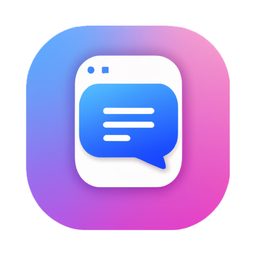
ChatPDF
ChatPDF is an AI-powered app that makes reading and analyzing articles more accessible and faster.
Users start by uploading the research paper PDF into the AI software and then asking questions.
The app then prepares a paper summary and provides the user with examples of questions it could answer based on the full article.
Users start by uploading the research paper PDF into the AI software and then asking questions.
The app then prepares a paper summary and provides the user with examples of questions it could answer based on the full article.
Source: https://www.euronews.com/next/2024/01/20/best-ai-tools-academic-research-chatgpt-consensus-chatpdf-elicit-research-rabbit-scite

Duolingo
Duolingo provides listening, reading and speaking exercises in dozens of global languages, all the while providing aspects of gamification to keep users coming back. By applying AI, Duolingo’s lessons are paced and leveled specifically for each student according to their performance. It also uses data and machine learning to make course improvements, taking into consideration the nuances of various languages.

ELSA Speak
ELSA Speak uses AI to help users perfect their English speaking skills. With speech data and voice recognition technology, the app is able to listen to a user’s accent and applies a color-coded system of red, yellow and green to identify how close the user pronounced certain words, as well as provide tips for how the user can improve. The app also includes language proficiency assessments, personalized curriculum, progress tracking and personalized lessons.

Socratic
Socratic provides homework help to students in middle and high school. All they have to do is take a picture of what they are working on with their phone, and the AI offers visual explanations to help them complete it. Acquired by Google in 2018, the app uses advanced text and speech recognition, and provides assistance in a variety of subjects, including literature, physics, biology, trigonometry and more.
Source: https://builtin.com/artificial-intelligence/ai-apps

Copy.ai
Copy.ai is an artificial intelligence writing tool designed for freelance writers, marketers, business owners, and copywriters to create various forms of content, including website copy, sales landing pages, email, social media bio, and blog sections.
The tool allows you to add a brand voice by creating content that reflects your brand voice – this helps it generate copy that aligns with your organization’s persona.
The tool allows you to add a brand voice by creating content that reflects your brand voice – this helps it generate copy that aligns with your organization’s persona.

Rytr
Rytr is an AI-powered writing assistant capable of producing content on various topics.
The platform supports 40 use cases, including blog ideas, email, job descriptions, blog section writing, and more – you can also manually create your use cases by training Rytr for your specific needs. Note that only paid plan users can create custom use cases.
The platform supports 40 use cases, including blog ideas, email, job descriptions, blog section writing, and more – you can also manually create your use cases by training Rytr for your specific needs. Note that only paid plan users can create custom use cases.

QuillBot
QuillBot is an AI-powered writing assistant that allows you to paraphrase and summarize texts and also functions as a translator and citation generation tool.
If you need a quality paraphrasing tool, I recommend QuillBot, especially for content marketers. However, students and people in academia may not prefer the tool because its output doesn’t consistently pass AI detection tools.
If you need a quality paraphrasing tool, I recommend QuillBot, especially for content marketers. However, students and people in academia may not prefer the tool because its output doesn’t consistently pass AI detection tools.

Frase.io
Frase.io is an AI writing assistant designed to help you generate content, improve grammar and spelling, provide suggestions for better writing, and even help with SEO optimization. It can be used for brainstorming ideas and improving writing skills for beginners.

Anyword
Anyword is an AI writing tool that uses machine learning algorithms to generate content. It can assist with writing tasks such as creating ad copy, crafting social media posts, generating blog content, and more.
The tool has a Copy Intelligence functionality that analyzes your previously published content to determine which messaging works best on your website, ads, social, and email channels.
The tool has a Copy Intelligence functionality that analyzes your previously published content to determine which messaging works best on your website, ads, social, and email channels.

Grammarly
Grammarly is a popular online writing assistance tool that can help you improve your written communication by checking for grammatical and spelling mistakes and offering suggestions for enhancing clarity, conciseness, and style.
It can be used in various contexts, such as writing emails, reports, essays, and social media posts. Grammarly can be used as a browser extension, a desktop application, or a mobile app and is free with limited features or as a premium subscription with additional functionalities.
It can be used in various contexts, such as writing emails, reports, essays, and social media posts. Grammarly can be used as a browser extension, a desktop application, or a mobile app and is free with limited features or as a premium subscription with additional functionalities.

Hemingway Editor
Hemingway Editor is a writing tool that helps you enhance the clarity and readability of your written work. It analyzes text and provides various readability suggestions. It highlights lengthy, complex sentences, excessive adverbs, passive voice, and hard-to-read phrases.
It assigns a readability score based on the grade level required to understand the text. It is available both as a web-based application and as a desktop app.
It assigns a readability score based on the grade level required to understand the text. It is available both as a web-based application and as a desktop app.

Writesonic
Writesonic uses artificial intelligence technology, specifically natural language processing (NLP), to provide content generation services.
Writesonic’s AI can generate text based on prompts and user input, making it useful for content marketing, copywriting, and other writing-related tasks. While it can be a helpful resource for content creation, the quality of generated content may vary, and human editing is often required to ensure accuracy and coherence.
Writesonic’s AI can generate text based on prompts and user input, making it useful for content marketing, copywriting, and other writing-related tasks. While it can be a helpful resource for content creation, the quality of generated content may vary, and human editing is often required to ensure accuracy and coherence.

AI Writer
AI Writer is designed to generate full-length articles in minutes.
The platform allows you to tailor the AI’s writing to your specific needs by selecting from a long list of recommended keywords for your topic or by manually inputting your chosen keywords. It also suggests sub-topics for your article, helps you structure your content with headings, and cites its sources.
The platform allows you to tailor the AI’s writing to your specific needs by selecting from a long list of recommended keywords for your topic or by manually inputting your chosen keywords. It also suggests sub-topics for your article, helps you structure your content with headings, and cites its sources.

ContentatScale.ai
Those looking for an AI writing tool to create blog posts and other long-form content may find ContentatScale features suitable.
The platform claims to pass AI detection tests, indicating that its generated content mimics human writing and is not easily distinguishable from human-written content. ContentatScale also offers an AI detector solution that ranks as one of our review’s best AI detector tools.
The platform claims to pass AI detection tests, indicating that its generated content mimics human writing and is not easily distinguishable from human-written content. ContentatScale also offers an AI detector solution that ranks as one of our review’s best AI detector tools.
Source: https://www.eweek.com/artificial-intelligence/ai-writing-tools/
AI untuk Rakyat is a self-learning online program designed to raise public awareness about Artificial Intelligence (AI). It aims to demystify AI for people from all walks of life – a student, a stay-at-home parent, a professional in any field, a senior citizen - basically, anyone interested in getting acquainted with it and wanting to build a ‘Digital First Mindset'
The program is divided into two sections: AI Aware and AI Appreciate.
Both sections can be completed in about four hours. Each section is based on AI-related concepts explained through engaging activities and quizzes. The users can take the quizzes as many times as they want. After they complete these quizzes, they become bearers of AI Aware and AI Appreciate badges that they can share on their social media accounts.
After completing both sections, the users can take it forward by making a self-learning plan. They can choose the domain they are interested in and begin their self-paced AI learning journey.
The AI untuk Rakyat program is available in 4 languages and the entire content is compatible with various talkback applications to make it completely accessible for the visually impaired.
- Can I call myself an AI expert after attending this program?
- I am unable to select my birth year on the registration page. What should I do?
- I did not receive the OTP. What do I do?
- I have finished the program. What is the next step?
- My query is not resolved yet - whom should I reach out to?
- What are the prerequisites for this program?
- What is AI untuk Rakyat?
- What is covered in the program?
- What is the duration of this program?
- What will I get once I complete the program?
- Who is this program for? Who should/ can attend/ participate in it?

